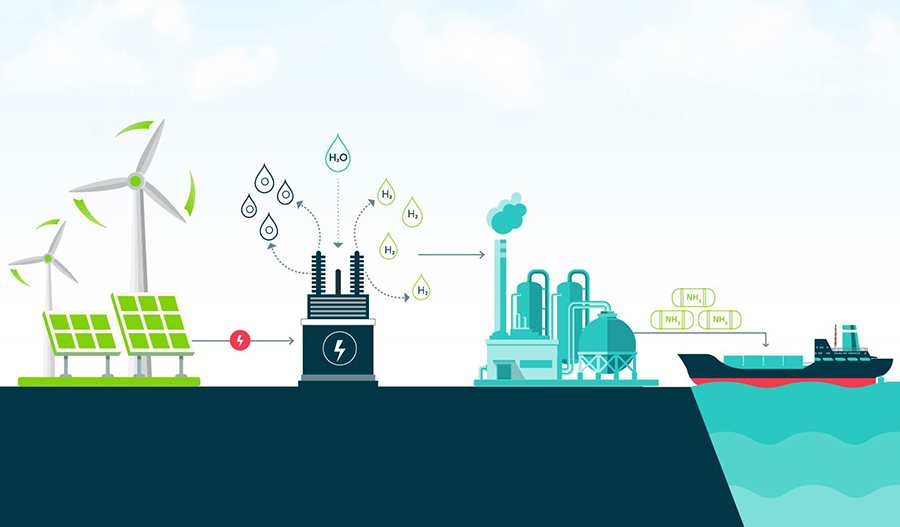
As global climate targets tighten and environmental regulations strengthen, process-intensive industries—such as steel, iron, cement, and chemicals—face mounting pressure to decarbonize. These sectors are collectively responsible for nearly 30% of global CO₂ emissions, primarily due to their reliance on fossil fuels for both energy and feedstock. One of the most promising avenues to reduce these emissions is the integration of green hydrogen and renewable energy technologies into their operations.
Integration Opportunities Across Industrial Processes
- Steel and Iron Production: Traditionally reliant on coke for reducing iron ore, the steel industry can transition to Direct Reduced Iron (DRI) processes using green hydrogen, which can reduce emissions by up to 90% compared to the conventional blast furnace method.
- Cement Manufacturing: While most emissions here are process-related (from limestone calcination), substituting fossil fuels with hydrogen and bio-derived fuels in kilns can substantially reduce combustion emissions.
- Chemical and Fertilizer Plants: Green hydrogen can replace grey hydrogen in ammonia and methanol synthesis. These sectors alone consume over 55 million tonnes of hydrogen annually, mostly from fossil sources.
- High-Temperature Heat Applications: Hydrogen can serve as a zero-carbon fuel in processes requiring high temperatures (>800°C), common in glass, ceramics, and refractory industries.
The Decarbonization Impact of Green Hydrogen
- Carbon Reduction Potential: According to the International Energy Agency (IEA), replacing fossil-based hydrogen with green hydrogen could reduce global CO₂ emissions by 830 million tonnes annually.
- Steel Sector Impact: McKinsey reports that switching to green hydrogen in the steel industry alone can cut 2.1 tonnes of CO₂ per tonne of steel.
- Cement Industry: A Boston Consulting Group study indicates that partial hydrogen substitution in cement kilns could reduce emissions by 10–20%, with full substitution offering even higher savings.
Choosing the Right Green Hydrogen Partner: What to Look For
Adopting green hydrogen is a capital-intensive and complex endeavor. Companies seeking to integrate hydrogen should evaluate solution providers based on the following core competencies:
- Engineering Depth: Providers must demonstrate strong engineering capabilities in process design, systems integration, and performance optimization for hydrogen-based applications.
- Renewable Energy Expertise: Integration with solar, wind, or hybrid systems is essential to ensure cost-effective and reliable hydrogen production via electrolysis.
- EPC and Integration Experience: Seek companies with proven Engineering, Procurement, and Construction (EPC) track records, capable of delivering end-to-end projects—from feasibility to commissioning.
- Electrolyser Technology Ownership: Indigenous design and manufacturing of electrolysers not only reduce costs but also enhance technology adaptability and serviceability.
- End-to-End Solutions: A single-window partner offering feasibility studies, renewable plant design, electrolyser deployment, storage solutions, and process integration reduces risk and improves ROI.
Green hydrogen offers a transformative opportunity for hard-to-abate sectors to pivot toward a sustainable future. By strategically integrating renewable-powered hydrogen systems and choosing the right partners, industrial giants can make significant strides in cutting carbon emissions and securing their place in a low-carbon economy.

